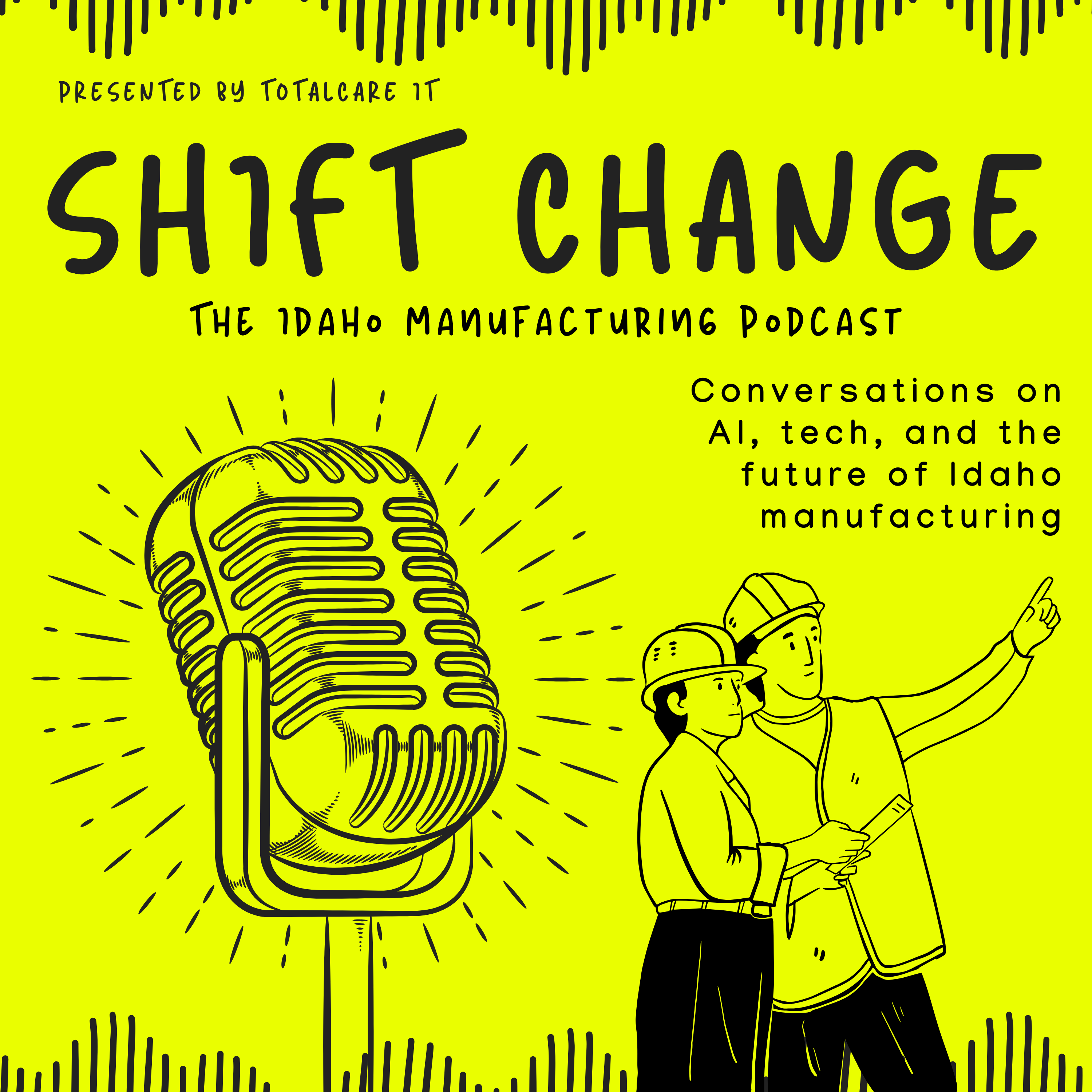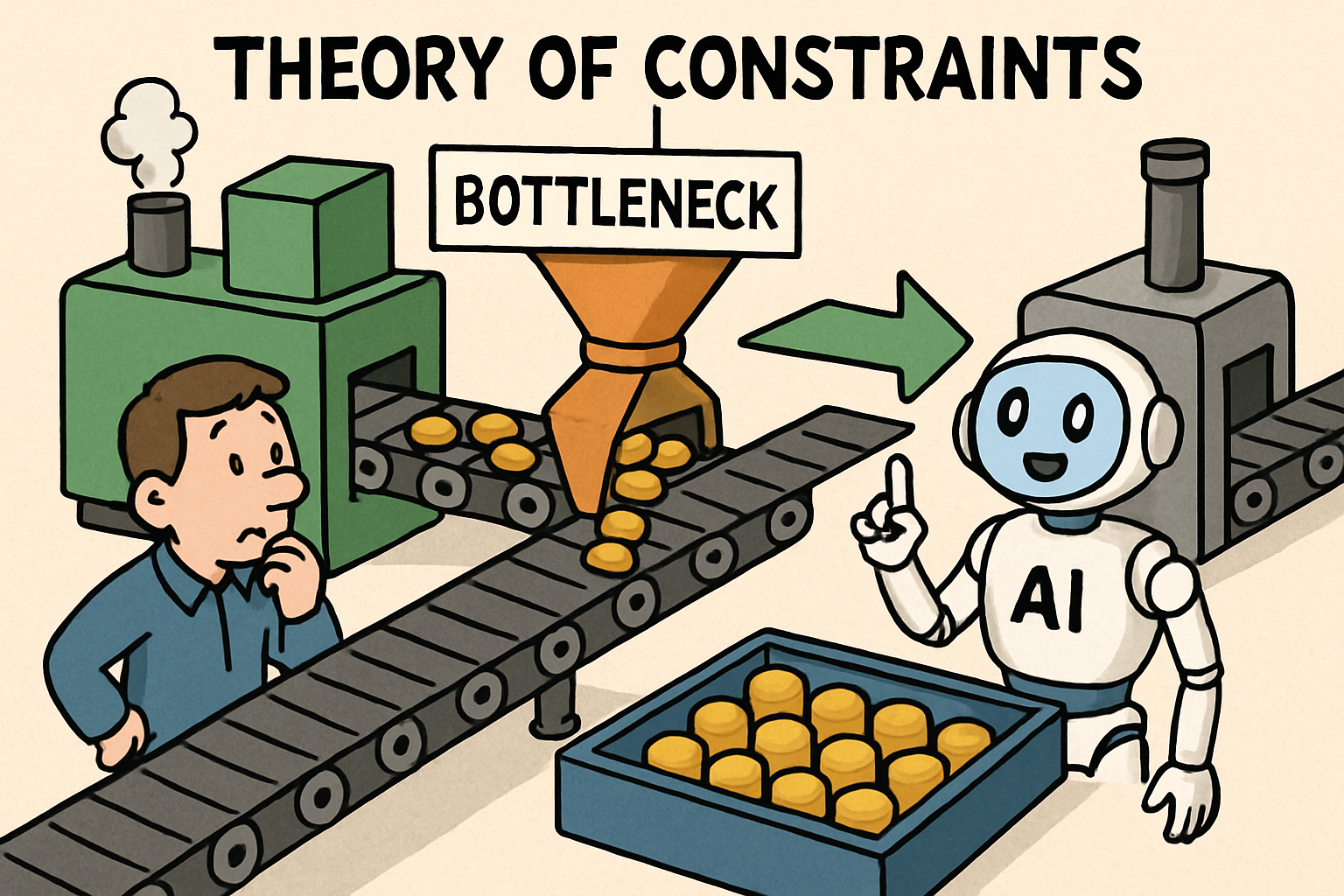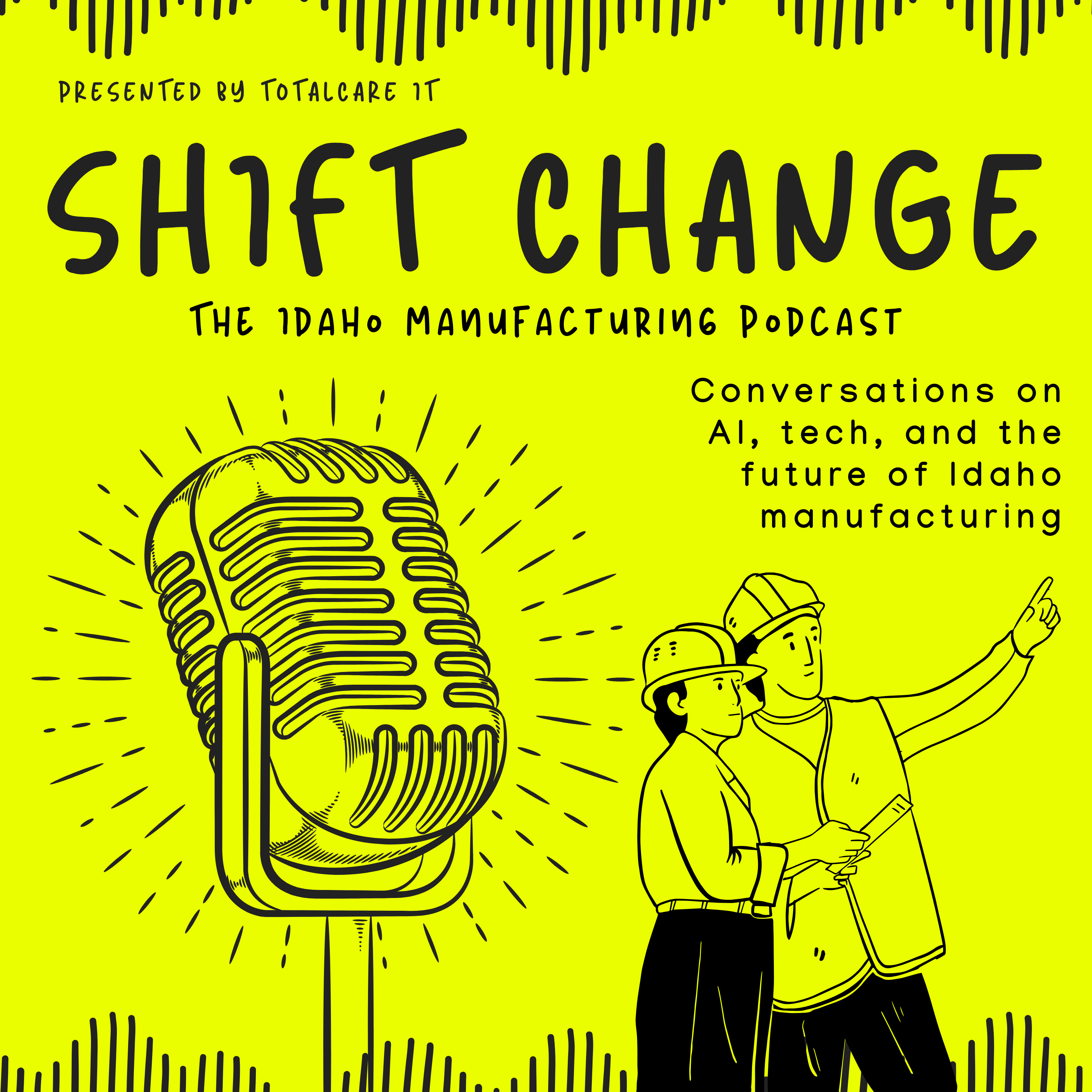Powering the Next Generation of Idaho Manufacturing with AI
Discover how to leverage AI safely and effectively — from predictive maintenance to intelligent automation
Manufacturing has always been about precision, efficiency, and continuous improvement. Now, Artificial Intelligence (AI) is taking those principles to the next level — helping businesses predict equipment failures before they happen, streamline production lines, and make data-driven decisions with confidence.
At TotalCare IT, we help Idaho manufacturers understand, implement, and secure AI technologies — so they can work smarter, not harder.
AI Adoption for Manufacturers: From Hype to High-Value Results
AI is not a futuristic concept anymore — it’s already improving operations in factories and production floors across the U.S.
Here’s how manufacturers are leveraging AI today:
-
Predictive Maintenance: By analyzing data from sensors and machines, AI can forecast potential breakdowns before they disrupt production. That means less downtime, lower maintenance costs, and higher productivity.
-
Quality Control: AI-powered vision systems can spot defects in real time, improving consistency and reducing waste.
-
Supply Chain Optimization: From demand forecasting to inventory management, AI helps businesses plan smarter and reduce bottlenecks.
-
Workforce Efficiency: Automation handles repetitive administrative or production tasks, freeing employees to focus on innovation and quality.
With the right strategy, AI is accessible and achievable for local Idaho manufacturers. But what is that strategy?

The AI Value Paradox
So, if AI is so important, why are most manufacturers not seeing results?
Artificial Intelligence (AI) is everywhere in today’s headlines — automating tasks, generating insights, and transforming industries. Nearly 77% of companies are using or exploring AI, but only 22% have the capabilities to turn pilots into measurable business gains.
This gap is the AI Value Paradox: the difference between adoption and actual value.
Most organizations deploy AI in scattered, disconnected ways — chasing automation without addressing what really limits their performance. The truth is simple:
Technology only creates value when it relieves a real bottleneck.
Idaho manufacturers must apply AI where it matters most — at the constraint — so it amplifies throughput, not noise.
The Core Problem: The Productivity Trap and Local Optimization
Too many manufacturers fall into the Productivity Trap — applying AI to make things faster instead of making them better.
Here’s what goes wrong:
-
The Band-Aid Effect: Businesses treat AI as a quick fix, automating symptoms instead of solving root constraints.
-
False Efficiency: AI accelerates non-critical tasks, giving the illusion of productivity without increasing total output.
-
Productivity ≠ Value: Real value comes from converting productivity into tangible gains — reduced costs, improved capacity, or revenue growth.
-
Amplifying Inefficiency: When AI optimizes upstream processes that aren’t the true bottleneck (like doubling orders when fulfillment is the constraint), it creates chaos instead of capacity.
AI, without strategic focus, often amplifies the wrong problem.
That’s why successful AI adoption starts with understanding where your true constraint lies.

The Constraint Is the Opportunity: The Power of the Theory of Constraints (TOC)
Every manufacturing system — from a CNC line to a supply chain — has one key constraint that determines how much value the entire operation can produce.
The Theory of Constraints (TOC), developed by Eliyahu Goldratt, teaches that improvement anywhere other than the bottleneck is an illusion.
AI becomes transformational only when applied to relieve your primary constraint.
Think of it this way:
-
If your constraint is machine downtime, AI predictive maintenance adds immediate value.
-
If your constraint is labor-intensive inspection, AI visual systems speed up throughput.
-
If your constraint is supply variability, AI forecasting eliminates uncertainty.
You need to find and focus on that constraint — the single point where technology can create exponential gains.

The TOC–AI Strategic Framework: The Five Focusing Steps
We use a practical, repeatable framework to align AI with the principles of TOC. Here’s how it works:
Step 1: Identify the System’s Constraint
Use operational data to pinpoint what truly limits throughput — whether it’s a machine, process, or decision loop.
Step 2: Exploit the Constraint (with AI if Applicable)
Maximize the performance of the constraint using current resources. AI may assist here — for example, using predictive analytics to reduce equipment idle time or using computer vision to accelerate inspection.
Step 3: Subordinate Everything Else
Ensure all other processes support the constraint. Don’t let AI-driven upstream optimizations flood your bottleneck. Align everything — including automation — around the constraint’s pace.
Step 4: Elevate the Constraint
If the constraint is still limiting throughput, it’s time to expand capacity — adding staff, upgrading tools, or implementing more advanced AI systems targeted specifically at the bottleneck.
Step 5: Repeat the Process
When one constraint is resolved, a new one will appear. Continuous improvement means continuously identifying, analyzing, and addressing the next limiting factor.
AI should never be applied everywhere. It should be applied precisely — where it removes friction and drives measurable throughput.
Constraint-Focused AI in Action
When AI Misses the Mark
-
Customer Service vs. Product Quality: Some firms deploy chatbots to manage rising customer complaints — but the real issue is defective products. The result? Frustrated customers, higher churn, and no real improvement in quality or satisfaction.
-
Advanced Models vs. Poor Data: Many organizations build complex AI systems on bad data. Gartner predicts that 60% of AI projects will fail by 2026 due to poor data governance — because data, not processing power, was the true constraint.
When AI Hits the Target
-
HCA Healthcare: Their constraint was the manual review of pathology reports. By implementing Azra AI, they cut diagnosis-to-treatment time by six days and saved over 11,000 labor hours — directly increasing throughput.
-
JPMorgan Chase (COIN): Their bottleneck was legal review time. The COIN AI system now reviews contracts in seconds, freeing over 360,000 hours annually and reducing errors.
These examples demonstrate a universal truth:
AI only delivers value when it’s focused on the true constraint.
Navigating Modern Constraints: Data, Reliability, and Culture
Today’s manufacturing constraints extend beyond machinery — they include data, people, and culture.
Data Quality
AI is only as good as the data it learns from. Incomplete or siloed information often becomes the invisible bottleneck that limits performance.
Reliability
Unreliable AI systems requiring human oversight simply shift the constraint instead of removing it. The goal is dependable automation that actually frees capacity.
Culture and Mindset
Leaders must replace “AI at scale” thinking with “Value over Volume.”
The goal isn’t to launch the most AI projects — it’s to launch the right ones.
Metrics should evolve too:
-
Not “hours saved,” but “orders shipped.”
-
Not “lines of code,” but “cycle time reduced.”
Ethical Constraints
Ethical and governance limits — bias, data privacy, and transparency — are modern constraints, too. True innovation is both effective and ethical.
A Constraint You Can Eliminate Without AI: Partnering with an MSP
Not every bottleneck needs artificial intelligence to solve it.
In fact, one of the most common — and easily fixable — constraints for manufacturers is IT instability: slow systems, security gaps, reactive support, and poor data visibility.
AI cannot create value on a shaky foundation.
Before you automate, you need reliability — and that’s exactly where a Managed Service Provider (MSP) like TotalCare IT becomes your strategic advantage.
Why IT Is Often the Hidden Constraint
When systems are unreliable, your constraint isn’t on the production floor — it’s in the network. Delays, downtime, and patchwork technology silently throttle throughput, data integrity, and team confidence.
Without stable IT, AI tools and data pipelines struggle to deliver results.
Fixing the Constraint — No AI Required
Hiring a proactive MSP removes that friction entirely.
With TotalCare IT, you gain:
-
Predictable Uptime: 24/7 monitoring and maintenance to eliminate downtime that strangles productivity.
-
Faster Support: Our 19-minute average response time keeps your people working instead of waiting.
-
Security and Compliance Built-In: Protection aligned with frameworks like CMMC 2.0 and NIST SP 800-171, giving you a secure base for future AI adoption.
-
Operational Visibility: Data insights from your infrastructure that reveal where true constraints lie — before you apply AI to the wrong one.
By removing IT instability as a constraint, you create the conditions for AI to thrive later.
Sometimes the smartest way to prepare for AI is to master the fundamentals first.
When your systems run reliably, your people innovate faster, your machines stay productive, and your future AI investments actually produce value.
Take the Next Step
Your next productivity leap won’t come from adding another tool. It will come from targeting your true constraint — and applying AI intelligently to remove it.
Before launching your next AI initiative, ask this one question:
“What is the primary constraint in our system — and will AI help relieve it?”
Start simple:
-
List your top three bottlenecks.
-
Measure where work consistently piles up.
-
Then, explore where AI can unlock flow.
Because AI is a force multiplier — but you choose what it multiplies.
Multiply noise, or multiply value. Focus on what truly limits your success, constraint by constraint.
TotalCare IT
Secure IT. Smarter Manufacturing. Real Results.
